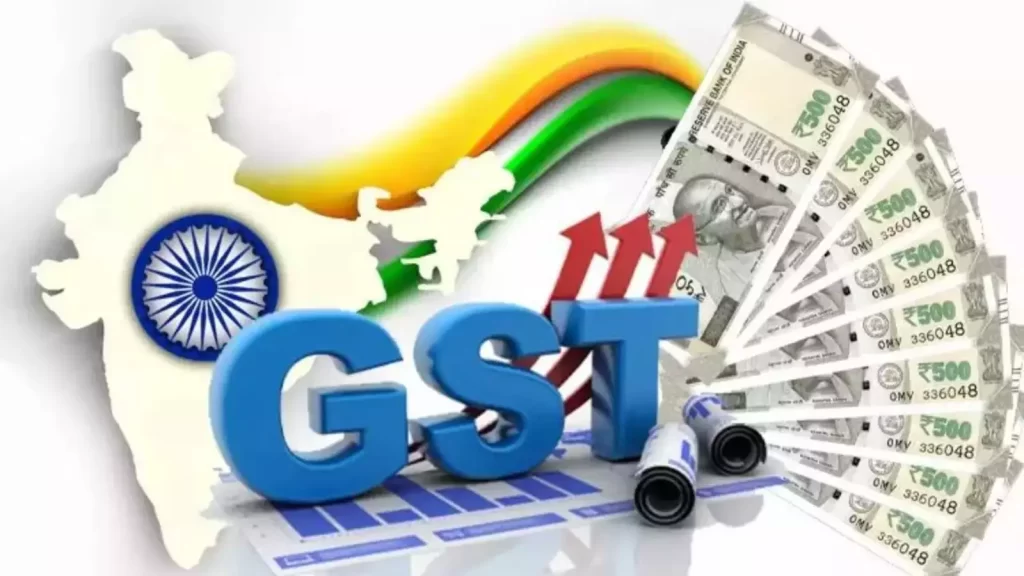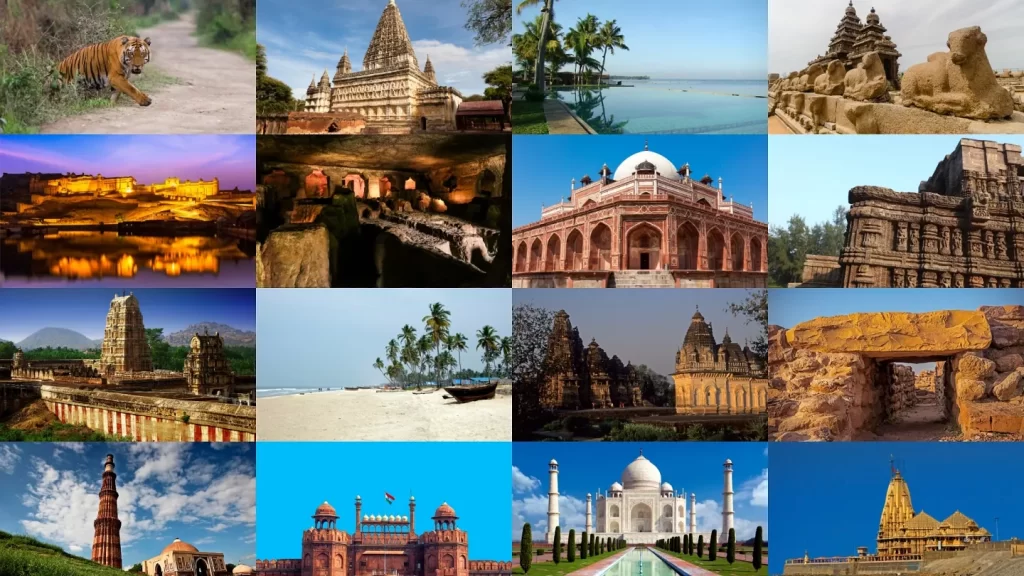Tourism in India is 4.6% of the country’s gross domestic product (GDP). Unlike other sectors, tourism is not a priority sector for the Government of India. Forbes magazine ranked India as the 7th most beautiful country in ‘The 50 Most Beautiful Countries In The World’ rankings.The World Travel and Tourism Council calculated that tourism generated ₹13.2 lakh crore (US$160 billion) or 5.8% of India’s GDP and supported 32.1 million jobs in 2021. Even though, these numbers were lower than the pre-pandemic figures; the country’s economy witnessed a significant growth in 2021 after the massive downturn during 2020. The sector is predicted to grow at an annual rate of 7.8% to ₹33.8 lakh crore (US$400 billion) by 2031 (7.2% of GDP).India has established itself as the 5th largest global travel healthcare destination with an estimated market size of around $9 billion in 2019, out of the total global travel healthcare industry of $44.8 billion(2019).In 2014, 184,298 foreign patients travelled to India to seek medical treatment. India’s tourism industry plays a significant role in the country’s economy, contributing around 10% to its GDP. With diverse attractions ranging from adventure and cultural experiences to wildlife encounters, India attracts both domestic and international travellers. However, the industry faces several challenges, including infrastructure issues, safety concerns, and the impact of seasonal fluctuations. To address these challenges, the Indian government has introduced initiatives like the Swadesh Darshan Scheme and the PRASHAD Scheme, aimed at improving tourism infrastructure and promoting heritage destinations. In recent years, India has taken proactive steps to boost its tourism sector. Hosting global tourism summits, launching campaigns like Visit India Year 2023, and promoting sustainable tourism through the Draft National Tourism Policy 2022 are among these initiatives. These efforts are geared towards enhancing infrastructure, ensuring safety measures, and attracting foreign investments to further develop the tourism sector. Background of Tourism in India India’s tourism potential reflects its rich diversity, encompassing historical monuments, geographical variations, climate diversity, and natural wonders. This array of attractions has made India a sought-after destination for travellers worldwide. Historical texts such as the ‘Arthashastra’ emphasise the importance of travel infrastructure for the state, underscoring the enduring significance of tourism. Post-Independence, tourism continued to occupy a central position in India’s development agenda, evident in its inclusion in successive Five-Year Plans. The introduction of various forms of tourism, including Business, Health, and Wildlife tourism, following the seventh Five Year Plan, demonstrates the government’s efforts to diversify and enhance the tourism sector’s offerings. Tourism acts as an economic multiplier, gaining prominence as India aims for rapid economic expansion and job creation. Throughout history, India has drawn travellers from afar, with figures like Hieun-tsang, a Chinese Buddhist, visiting the country due to its legendary wealth. Pilgrim travel also saw a surge, with Emperors Ashoka and Harsha facilitating the construction of rest houses for pilgrims. It serves as a crucial driver for employment generation, revenue growth, and bolstering foreign exchange reserves. Notably, India’s tourism and hotel industry ranks as the third-largest contributor to foreign exchange earnings. Introduction of Tourism in India Tourism involves travel for pleasure or business, including activities such as attracting, accommodating, and entertaining tourists. According to the UN World Tourism Organization, an international tourist is someone travelling outside their country of residence. India, one of the oldest civilizations, offers a diverse range of experiences. From the snowy Himalayas to the lush rainforests of the south, it covers a vast area of over 3 million square kilometres. Surrounded by the Great Himalayas in the north and bordered by the Indian Ocean in the south, India has a unique geographical identity. Travelling across India exposes visitors to a variety of cuisines, religions, arts, crafts, music, landscapes, tribes, history, and adventure sports. The country seamlessly blends the old with the new, with bustling markets alongside modern shopping malls, and ancient monuments coexisting with luxury hotels. Types of Tourism Supported in India Adventure Tourism: Involves exploring remote areas and engaging in various activities like trekking, skiing, and whitewater rafting. Popular destinations include Ladakh, Sikkim, Himalayas, Himachal Pradesh, and Jammu and Kashmir. Beach Tourism: India’s vast coastline and islands offer opportunities for leisure activities. Kerala, Goa, Andaman & Nicobar Islands, and Lakshadweep attract tourists with their beaches. Cultural Tourism: Tourists come to experience India’s rich cultural heritage and attend various fairs and festivals. Sites such as Ajanta & Ellora caves, Mahabalipuram, Hampi, Taj Mahal, and Hawa Mahal are popular destinations. Eco Tourism: Focuses on sustainable preservation of natural areas or regions. Tourists visit places like Kaziranga National Park, Gir National Park, and Kanha National Park for ecotourism. Medical Tourism: Offers cost-effective but quality healthcare to foreign tourists. Chennai attracts a significant number of medical tourists from foreign countries. Wildlife Tourism: India’s rich forest cover and exotic wildlife species attract tourists. Sariska Wildlife Sanctuary, Keoladeo Ghana National Park, and Corbett National Park are popular destinations for wildlife tourism. Indian Tourism Industry Contribution to GDP: In 2015, the travel and tourism industry contributed $124.8 billion to India’s GDP, accounting for about 10% of the total GDP in 2020. Growth Trends: India was identified as one of the fastest-growing tourism destinations globally in a 2014 study. Expected annual growth rate of 6.4% between 2014 and 2024. It is anticipated to be the third fastest-growing tourism destination with a 7.9% annual average growth rate till 2023. Employment: Tourism in India provides 40 million jobs, with over 7.7% of Indian employees working in the industry. In 2019, the sector accounted for 39 million jobs, which was 8.0% of total employment, expected to increase to about 53 million jobs by 2029. Visitor Statistics: The US is the largest source market for visitors to India, followed by Bangladesh and the UK. Outbound travel from India was forecasted to reach 1.41 million in 2020. Foreign tourist arrivals in March 2022 showed significant growth, indicating a post-pandemic revival. World Rankings: India ranks 54th out of 117 countries overall in the World Economic Forum’s Travel and Tourism Development Index 2021. Ranked 10th in terms of contribution to World GDP in the World Travel and Tourism Council’s report in 2019. Heritage Sites: India currently has 42 sites listed under the ‘World Heritage List’, ranking 6th globally. Financial Impact: In 2019, the contribution of travel and tourism to India’s GDP was 6.8%, amounting to approximately Rs. 13,68,100 crore (USD 194.30 billion). Significance of Tourism Boost to








